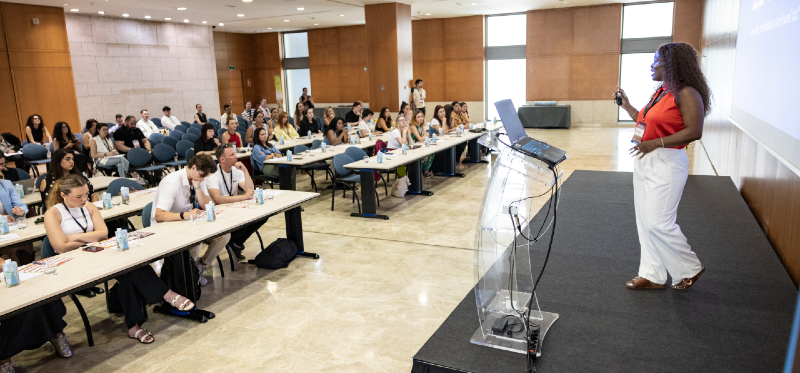
Introduction
The discovery and planning phase is the cornerstone of web development projects, accounting for approximately 50% of the work and holding paramount importance.
It establishes the foundation for the project, ensuring the final website aligns with company goals, stakeholder expectations and user needs.
Here is a comprehensive list of key components to consider when preparing for a web development project, from initial research to project management and launch.
1. Workshops and research
Conducting workshops
Workshops with stakeholders and the development team are vital for defining project requirements and forming a solid plan. These sessions align everyone involved, fostering a shared vision and mutual understanding.
Benefits of workshops:
- Gives the development team a clear understanding of your needs and expectations
- Collaborative environment for idea-sharing and innovation
- Helps in setting realistic timelines and deliverables
Competitor research
Analysing competitors’ websites provides insights into appealing design elements, features and user engagement strategies. This research guides the design process by highlighting effective elements to incorporate and innovate upon.
Benefits of competitor research:
- Understanding user preferences and industry standards
- Identifying successful elements to replicate and innovate
- Revealing market gaps and opportunities for differentiation
User research
User research is essential for grasping the target audience’s needs, preferences and behaviours. It allows you to consider the needs of different local audiences. User research can take the form of interviews, surveys and/or the creation of user personas to inform design decisions, ensuring the website is user-friendly and meets actual user needs.
Be aware that similar personas for different countries might have different needs, pain points and behaviours. Do not assume you can re-use your personas from the UK for, say, the German or Spanish markets.
Methods of user research:
- Interviews: One-on-one conversations for in-depth insights
- Surveys: Broad data collection from a larger audience
- User persona creation: Fictional yet realistic representations of key audience segments
2. Design and content planning
Design
Agreeing on colour schemes, concepts and features is crucial. This phase includes creating mood boards, wireframes and prototypes to visualise the website’s look and feel.
If you are working on an international website, think about how design elements might need to differ for different markets. For example, in the German market, where trust is paramount, it may be more important to include trust signals such as more visible testimonials, reviews and logos of local authority bodies that you have certifications from.
Benefits of design planning:
- Colour schemes reflecting the brand identity
- Visual concepts aligning with project goals
- Essential features enhancing user experience, tailored to each target market
Structure
Mapping out the website structure involves determining necessary pages and sections, creating a sitemap, and outlining navigation paths for intuitive user journeys.
Benefits of structure planning:
- Defining primary and secondary pages
- Organising content hierarchically
- Ensuring logical and user-friendly navigation
Content and assets
Identifying the required content and assets involves listing text, images, videos and other media for each page.
Benefits of content and asset planning:
- Creating a detailed content inventory
- Identifying gaps in existing content
- Planning for content creation and curation
Key features and functionality
Determining essential features per page ensures the project meets user needs and your objectives.
Benefits of feature and functionality planning:
- Interactive elements such as buttons, forms and sliders
- Social media integration
- Multimedia content (videos, galleries and animations)
- Search functionality
3. Technical considerations
CMS considerations
Choosing the right content management system (CMS) is critical for efficient content management. The CMS should offer scalability, flexibility and ease of use.
Benefits of choosing the right CMS:
- Scalability for future growth
- User-friendly interface for content management
- Customisation options
Hosting and maintenance
Planning for hosting and maintenance ensures the website runs smoothly and stays updated. Select a hosting strategy that aligns with your budget and technical needs and establish a maintenance plan to minimise risks and maximise uptime.
Benefits of hosting and maintenance planning:
- Selecting a reliable hosting provider
- Planning for regular updates and backups
- Ensuring website security and performance monitoring
Tool integration
Integrating necessary third-party tools for customer relationship management (CRM), analytics, webinar hosting, video hosting and more is essential for enhancing functionality.
Benefits of tool integration planning:
- Choosing tools that align with project goals
- Ensuring seamless integration with the website
- Planning for future scalability and upgrades
Tracking and analytics
Developing a tracking and analytics plan helps measure website performance and user engagement from the beginning.
Key elements of tracking and analytics planning:
- Setting up Google Analytics or other tracking tools
- Defining key performance indicators (KPIs)
- Regularly reviewing and analysing data to drive smart decision-making
4. Legal and compliance
Data security
Secure data storage and transfer are crucial for protecting user information and complying with regulations.
Benefits of data security planning:
- Implementing SSL certificates
- Ensuring secure data transfer protocols
- Regular security audits
Privacy policy and cookie banner
Creating compliance documentation, which should include a privacy policy and cookie banner, is vital for legal compliance and user transparency.
Be aware that legal requirements will differ depending on the country, so if you have an international website, you may need to adhere to different laws on different pages.
Benefits of compliance documentation planning:
- Drafting a clear and comprehensive privacy policy
- Implementing a cookie consent banner
- Keeping documentation up to date with regulations
Responsibility outline
Defining legal responsibilities ensures all parties understand their roles and obligations.
Benefits of outlining legal responsibilities:
- Clarifying responsibilities for data protection
- Outlining client and developer obligations
- Ensuring compliance with applicable laws
5. Project management and timelines
Launch date
Setting a target launch date and dividing the project into phases helps manage timelines and ensure timely delivery.
Benefits of timeline management:
- Establishing clear milestones and deadlines
- Creating a detailed project schedule
- Regular progress reviews
Contact points
Identifying who will be the main contacts and reviewers involved in the project lays the foundation for easy communication and effective decision-making.
Benefits of defining key contacts:
- Designating a primary contact person
- Establishing a review process for feedback
- Ensuring clear communication channels
Testing and QA
Planning for testing and quality assurance (QA) ensures the website functions correctly and meets user expectations.
Key parts of testing and QA:
- Conducting thorough functionality testing
- Performing user acceptance testing (UAT)
- Fixing any bugs or issues before the final launch
Conclusion
Investing time in a thorough discovery and planning phase lays a strong foundation for a successful web development project. This phase helps set clear expectations, minimises the risks of last-minute changes, and ensures the final website meets your exact needs and vision.
Webcertain is here to help with every step of your web development project and beyond. Our team of experts can guide you through workshops, research, design, technical considerations and project management to ensure your project is a success. Contact us today to get started on your journey to an outstanding web presence!







